MARIANI’S
April
10,
2011
NEWSLETTER
Carey Lowell in "Licence to Kill"
(1989)
Israel:
Savoring
the
Holy
Land
by John Mariani
New
York
Corner: Junoon
by
John
Mariani
Photos
by
Galina
Stepanoff-Dargery
 "O
pray
for
the
peace
of
Jerusalem:
they
shall
prosper
that
love
thee.
"O
pray
for
the
peace
of
Jerusalem:
they
shall
prosper
that
love
thee.
Peace be within thy walls: and plenteousness with thy
palaces."--Psalm 122.
So
saith
the
Bible
of
the
holiest
city
in
the
western
world
and
the
one
most embattled for more than two millennia.
As the
omphalo point of so many religions and pilgrims’ ultimate goal,
Jerusalem
can send waves of emotion through even the most agnostic of
visitors. Its
historical importance is at least as geographic as it is religious, and
the situation
of the old city within a valley of green mountains is breathtaking as
one
realizes that here, in the Garden of Gethsemane above the city's walls,
Christ
awaited his doom; here the Lord asked Abraham to sacrifice his only
son,
Isaac; here the Jews exalted the construction of and lamented the
Romans'
destruction of the Temple.
It
is a city that has been captured and recaptured 44 times. King Richard
the
Lionhearted wept over his failure to conquer the city, and
successive Arab
countries have tried and been defeated in trying to occupy it. Ironic,
then,
that the name Jerusalem translates as "the Abode of Peace." And
despite the many agonies inflicted by and upon both sides of the
Israeli-Palestinian issue, the city has attracted large numbers of
Palestinians, who come for jobs, health care, social security, schools
and a
remarkably safe haven.
In
the
time
I
spent
in
Jerusalem
and
other
cities
of
Israel,
the
one
thing
I
saw
forcefully was the way Palestinians, Christians and Jews move
throughout the
city freely, buying wares from each other, selling bread and spices. As
a guide told me,
“Where there
is education, commerce and profit, there is not going to be any strife.” Mingling socially among the groups,
however, has not yet risen to the point of true embrace.
Everyone
who
goes
to
Jerusalem
visits
the
Old
City
first,
the
Wailing
Wall
and
the
New
Testament
sites that include the sepulcher where tradition has it that
Christ
was buried—a visit that can take hours on a line that curls and
curls within
yards from Golgotha, the hill
where Christ was crucified.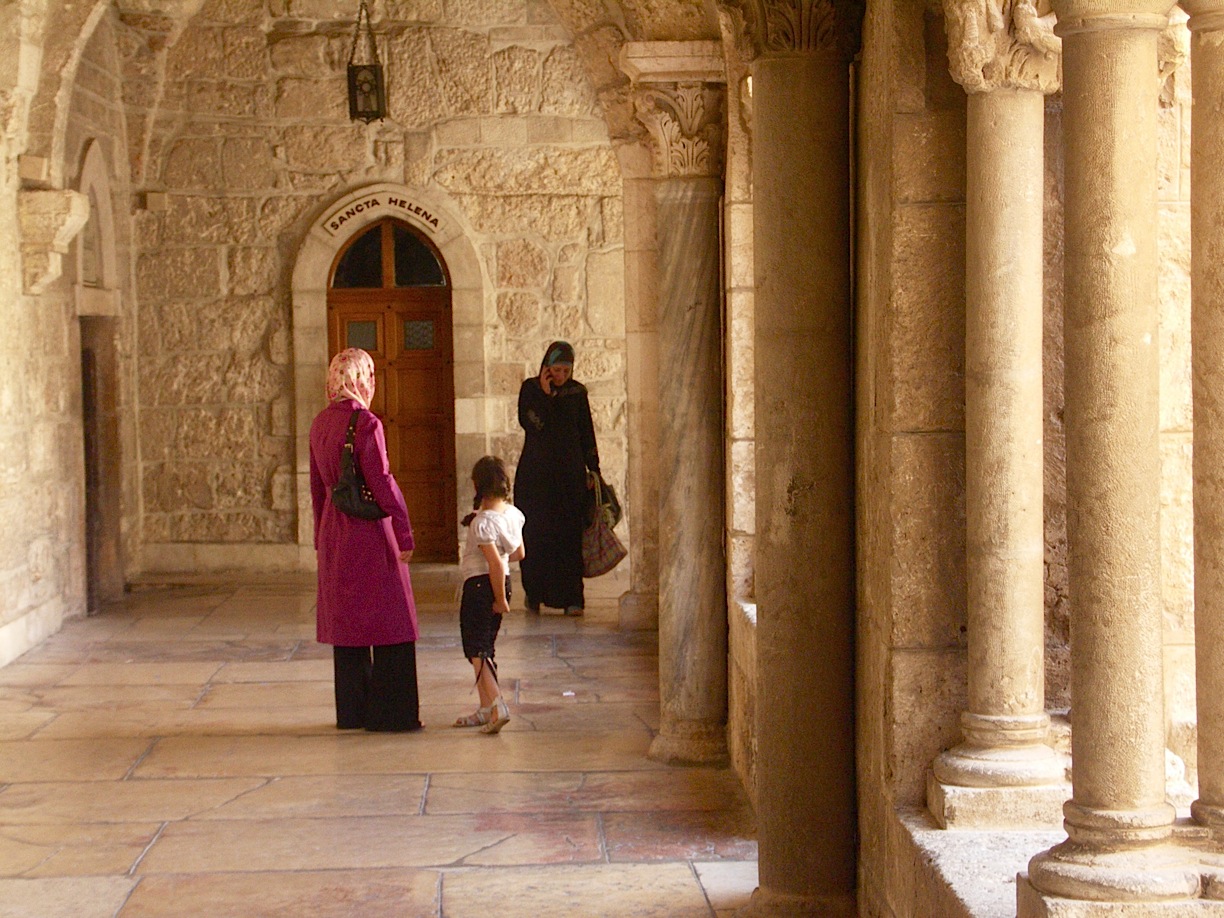
The
Jewish
Quarter,
with
its
series
of
lovely
squares,
gives
a
fascinating
glimpse
into
a
way
of life unchanged for centuries, and in the Muslim Quarter,
you can
walk through the historic Damascus and Herod’s Gates,
visit the Central
Souk,
and stroll through Haram esh-Sharif, the “Noble Sanctuary”
that was
traditionally the site of Solomon’s Temple and which still contains the
exquisite Islamic Dome of the Rock. The
Quarter also is home to several other sites devoted to
the Passion
of Christ—most based on little more than a leap of faith—including the Monastery of the Flagellation and
the bustling Via Dolorosa,
both easily
visited within minutes of one another.
Jerusalem’s modern cultural
institutions include the Israel Museum,
which
contains
The
Dead
Sea
scrolls,
discovered
in
the
mid-20th
century
in
the
Qumran
caves near the Dead Sea. The Rockefeller
Museum was built
in 1938, and Yad Vashem is
Israel's national memorial to the victims of The
Holocaust. The Islamic Museum
on the Temple Mount is a repository of artifacts
and manuscripts. The Jerusalem
Symphony Orchestra is world renowned, as is the Israel
Philharmonic Orchestra.
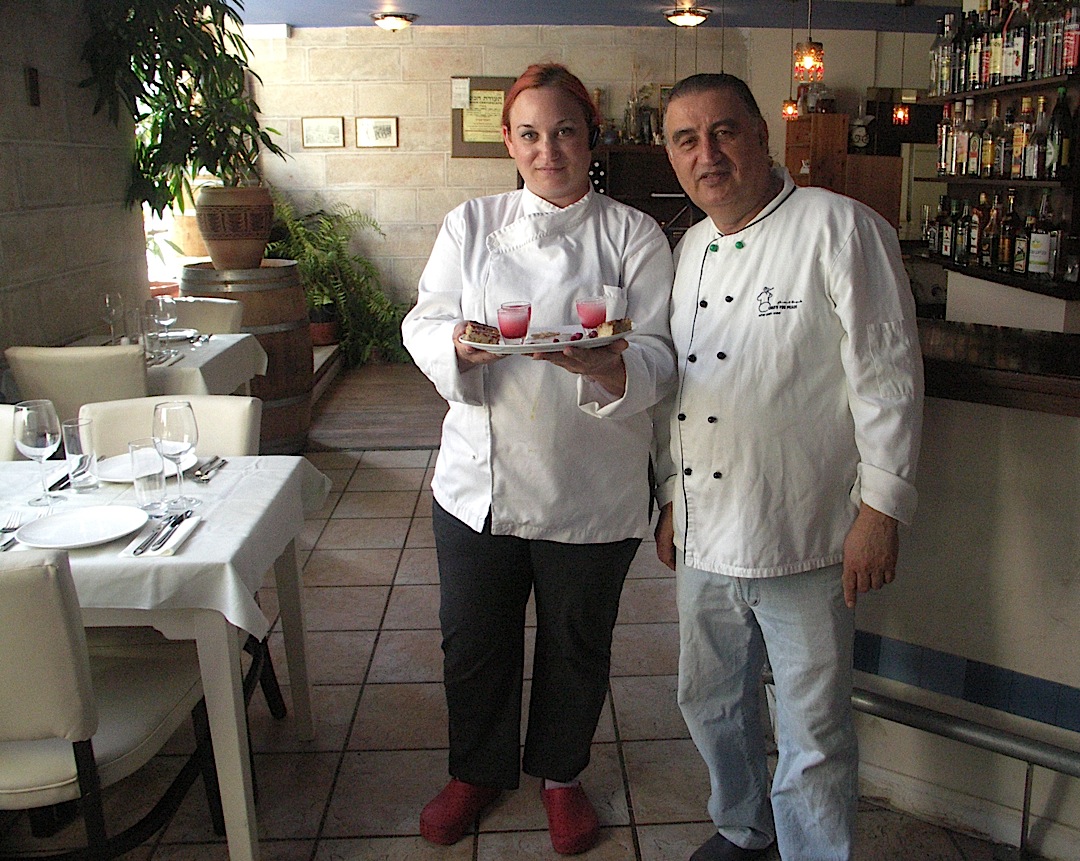 excellent
wines to
be savored (see article below).
Tipping
10
to
15
percent
is
expected.
excellent
wines to
be savored (see article below).
Tipping
10
to
15
percent
is
expected.Ask any sophisticated Israeli where the best modern cuisine is to be found and the answer is likely to be the 20-year-old Eucalyptus (14 Hativat Yerushalaim St. Hutzot Hayotzer; Phone: 02-624433), run by the effusively congenial chef Moshe Basson (left), who is fascinated by Middle Eastern spices, which he blends for a dazzling array of fascinating flavors best appreciated in his various tasting menus he calls “King David Feast” (seven courses), “Kings and Prophets Feast” (eleven), and “Shir Ha’Shrim Feast” (fifteen). Here, in a bright, colorful dining room in the arts district, flanked by galleries and boutiques, you may start with three different soups served in espresso cups, each dependent on the season, including “Jacob and Esau’s biblical red lentil stew,” and another of Jerusalem artichoke soup with almond milk. (A digression: Jerusalem artichokes actually came from the Americas and got their name in Italy as “girasole”—a sun choke—which in English got warped into “Jerusalem artichoke.”)

The mezes (right) are both traditional and imaginative--charcoal-smoked, sweet eggplant with pomegranate syrup; highly spiced chickpea salad; fresh minty hyssop with spring onions; seven-herb potato salad; baba ghanoosh; pickles and purslane pour from the kitchen and you can’t stop noshing on everything. One of the signature dishes, rightly so, is Bosson’s stuffed figs with chicken in a sweet-sour tamarind sauce. Nahaphoch-hou is a delicious casserole of chicken, rice, and vegetables, while veal kofta comes with okra and tomato sauce; and no feast in the Middle East is complete without a lamb dish, here baked with vegetables in a clay pot overnight in a tabu oven.
Lovely desserts include “Ice from Paradise,” made from almond milk and a hibiscus sauce; “Land of milk and honey,” with sesame ice cream and honeyed dates; a delightful “basbusa” semolina cake; and pears soaked in red wine with almond ice cream.
You will not escape Bosson's ebullient presence, which imbues this darling restaurant with his big personality, very much in the spirit of Ecclesiastes (9:7): "Go they way, eat they bread with joy, and drink thy wine with a merry heart."
Appetizers run $9.50-$13, main courses $25-$32, with Tasting Feast menus at $48, $54, and $65.
In
contrast
to
the
historic
splendor
and
richness
of
Jerusalem,
Tel
Aviv
is
a
far
more
modern and forward-looking city, not without its share of cultural
attractions, including the Carmel
Market, the Eretz Israel Museum, the three Etzel Museums and the Haganah Museum. Tel Aviv is really a
cobbling together of
old neighborhoods into a more-or-less cohesive seaside city, with five
miles of
beaches and its citizenry is not nearly as observant of Judaic laws and
traditions as Jerusalem is. It is
a hardworking business citadel during the day and a party town at night. Modern hotels and resorts abound, but
one can visit ancient sites, in various states of repair, not far from
the
city. The true draw is the beautiful old town of Jaffa, located above
the sea, sand-washed and picturesque, quiet and relaxing after the
hub-bub of Tel Aviv.
There
are
thousand
of
restaurants,
many
just
casual
cafés,
located
along
Kikkar
Yitzhal
Rabin
and
Dizengoff,
as well as in Jaffa
. The choice of international cuisines is
as varied as any major world city, from French bistros and Italian
trattorias
to a place appropriately called Houmous
Ashkara
on Yirmiyahu Street where
everything does indeed include hummus (which would make a good Monty
Python routine).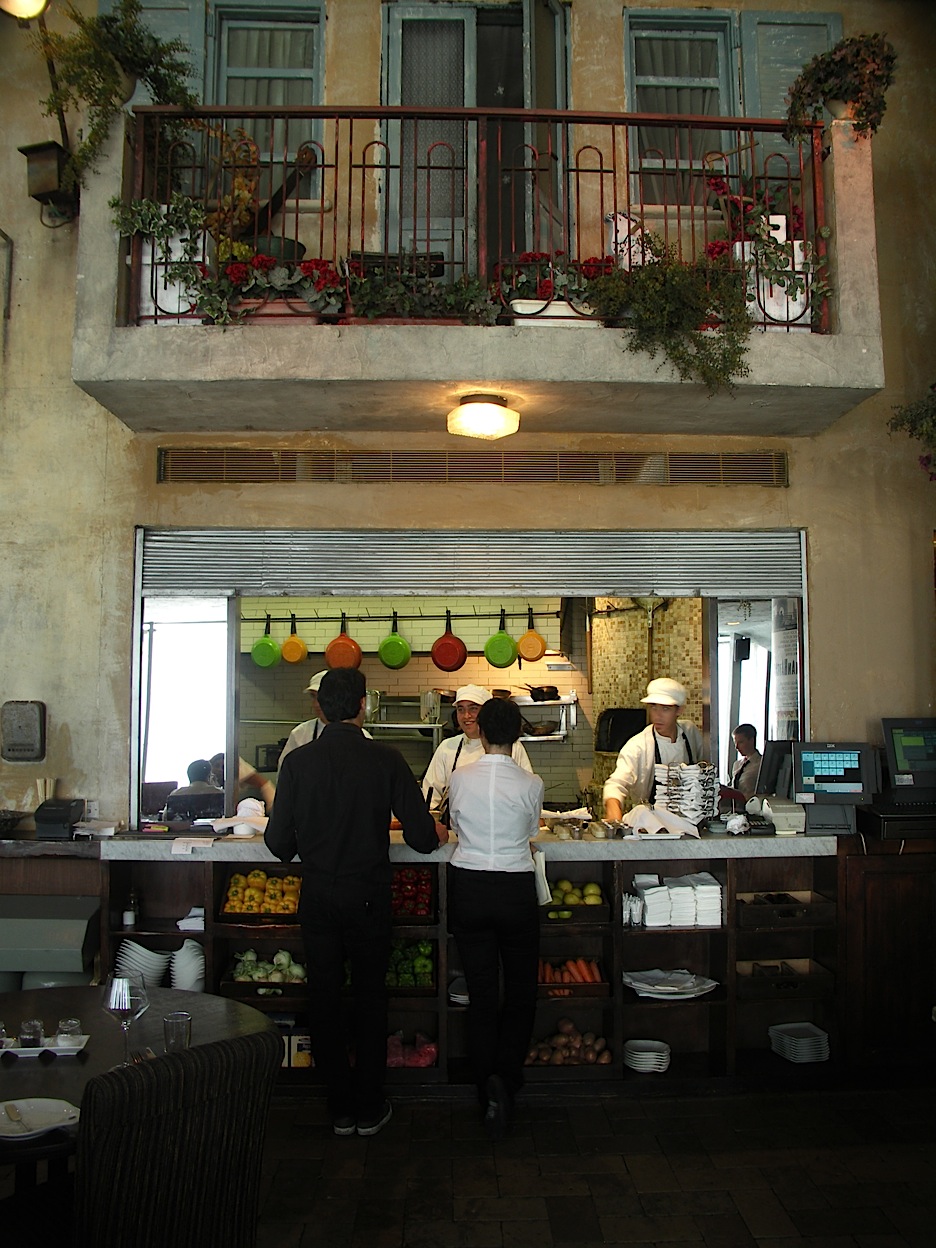
We
ate
at
a
superb,
non-kosher
restaurant
in
the
Nave
Tzadek
business
district,
across
from
the
new
Microsoft building. Segev (16
Shenkar Herzliya; 972-(0)9-9580410; right) serves what
it calls “Fresh Festive Chef’s
Cuisine,” the chef in question being Zegev
Moshe, who is as adept at modern European cooking as he
is in interpreting the flavors of the Middle East, evident in dishes
like a spicy
sprout salad with nuts, kohlrabi, and a zap of aïoli chili. (below). He fills
fresh ravioli
with goat’s cheese, zucchini and leeks and serves it in a tomato cream
with
balady eggplant. Extremely good
gnocchi with truffles and crabmeat comes with a cherry tomato salad,
and the
very best appetizer I tried was fresh shrimp cooked in Dutch butter and
green
garlic, enoki mushrooms and
chili—the tender shrimp tiny and sweet and addictive.
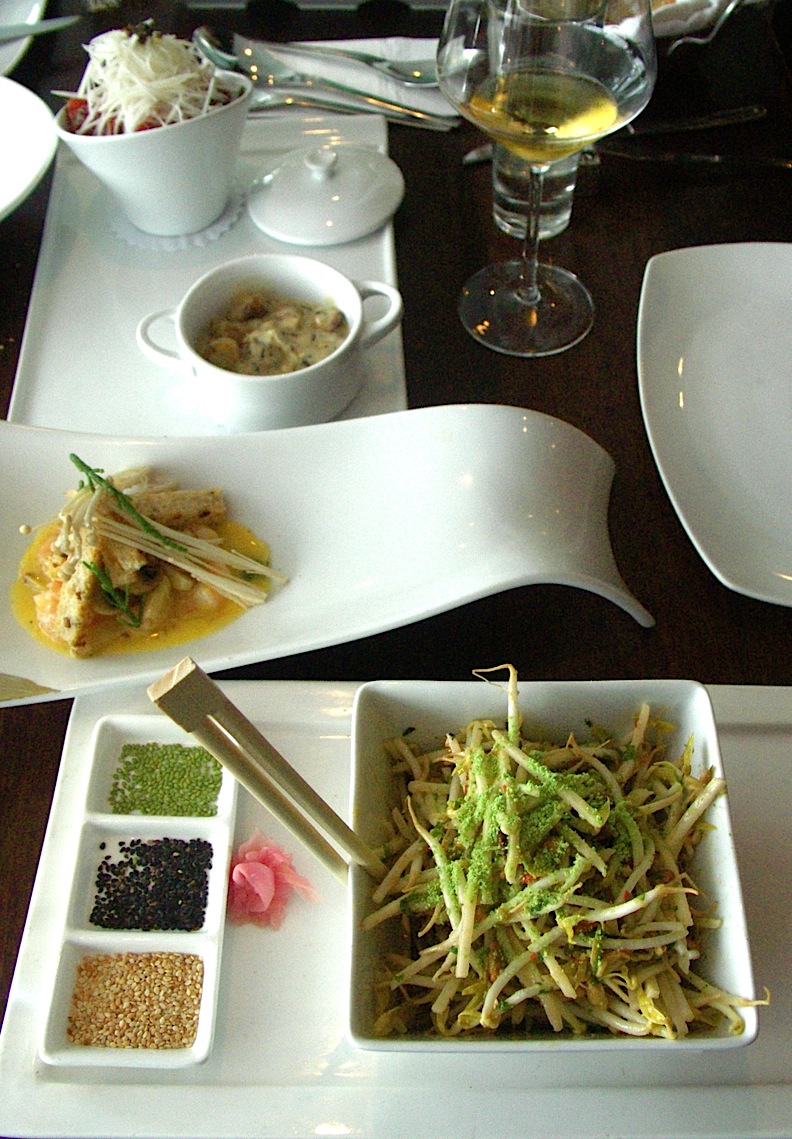 For
main
courses I recommend the filet of salmon in teriyaki style, with
creamed
potatoes, the scent of lemongrass, and the salt marsh green called
salicornia. Grilled drum fish
comes with a spicy tapenade with baked potato and a light aromatic
curry sauce.
One of
the best duck dishes I’ve ever had anywhere is Zegev’s grilled mallard
fillet,
well
fatted and succulent, served with asparagus., roasted potatoes,
sunflower
seeds
and ground sesame—a perfect example of modern Israeli cuisine.
For
main
courses I recommend the filet of salmon in teriyaki style, with
creamed
potatoes, the scent of lemongrass, and the salt marsh green called
salicornia. Grilled drum fish
comes with a spicy tapenade with baked potato and a light aromatic
curry sauce.
One of
the best duck dishes I’ve ever had anywhere is Zegev’s grilled mallard
fillet,
well
fatted and succulent, served with asparagus., roasted potatoes,
sunflower
seeds
and ground sesame—a perfect example of modern Israeli cuisine.
For
dessert
I
very
much
enjoyed
a
chocolate
cake
with
milk
chocolate
and
dark
chocolate
ice
cream, and little meringue kisses with figs and
mascarpone
cream.
The place is very lively, wholly
unpretentious, rustic, with a fool-the-eye balcony, with chef's jackets
hanging from hangers. an open kitchen, and columns wrapped in Hollywood
movie posters of Woody Allen, Dean Martin, and Charlie Chaplin. English
is well spoken here.
There
is an excellent business lunch at $33
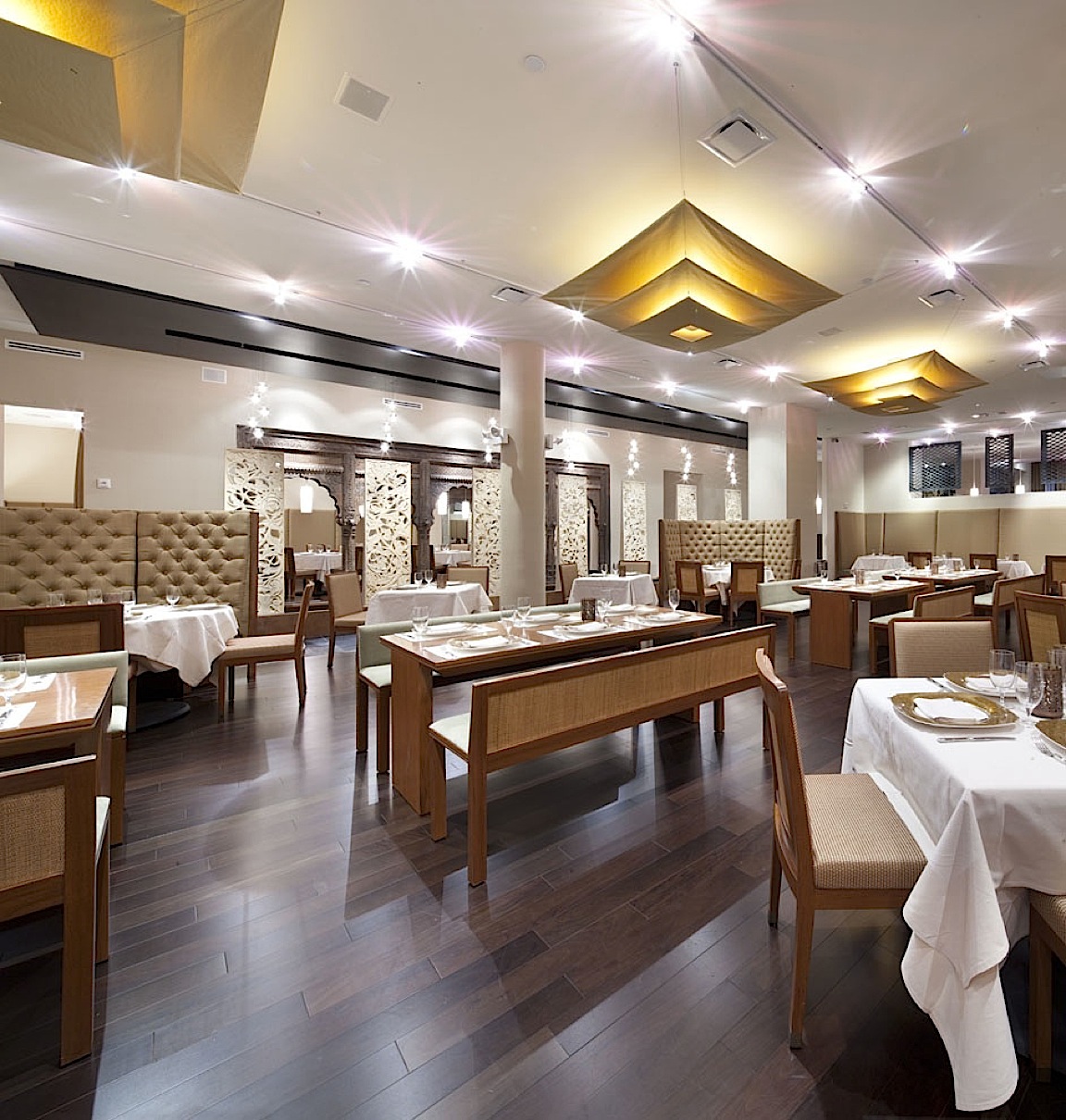 Junoon
Junoon
27 West 24th Street (near Fifth Avenue)
212-490-2100
junoonnyc.com
I’m not, however, certain NYC needs a whole lot more fine Indian restaurants because it is still a cuisine many people simply don’t care for very much. The newer upscale places are trying hard to make converts by serving more refined and far more varied food than the usual kebabs and tandoori items that have a wide appeal and do so within beautifully designed dining rooms, of which Junoon is the latest example.
Opened in mid-December last year, Junoon--the word means "passion"--is a very large, airy, spacious 145-seat restaurant with a seductively lighted 50-seat bar separated from the rest. The lounge area has two antique jhoola swings made from
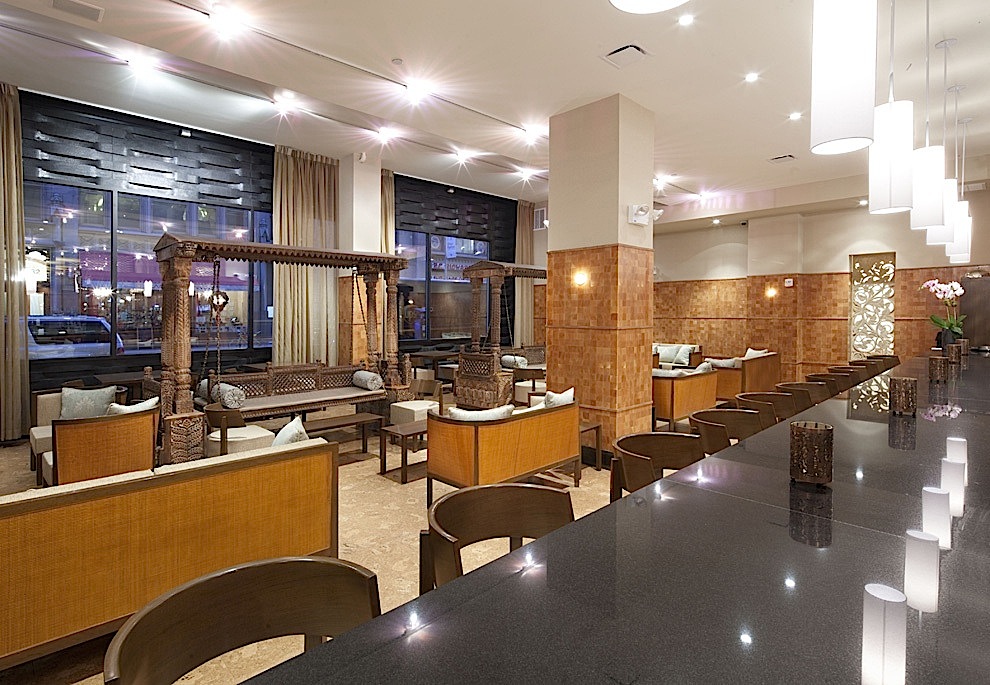 Burmese teak wood. The facade has a wonderful basket
weave of black limestone. "Tree of Life" sculptures line
the entry to the main dining. With
is roomy booths, large dining tables in good napery, with fine
glassware—and
probably the best wine list of any Indian restaurant in the city—Junoon
rings
with sophistication. The problem,
at least at night, is that management keeps the lights so low that it’s
impossible to see the colors, textures, and décor of the room,
especially some
large abstract paintings on the walls. (the photo above
must have been taken with the roof off.) The only real light
comes from the kitchen, where, amid
gleaming
stainless and silver, the cooks work their magic with a menu full of
classics
and surprises, within categories of tandoor clay pot cookery, open fire
pit
sigri style, cast iron tawa, handi curries, and the stone cooking
called
patthar. I recommend you choose
among as many as you like, which may be sampled under the “five
elements menu”
at $75.
Burmese teak wood. The facade has a wonderful basket
weave of black limestone. "Tree of Life" sculptures line
the entry to the main dining. With
is roomy booths, large dining tables in good napery, with fine
glassware—and
probably the best wine list of any Indian restaurant in the city—Junoon
rings
with sophistication. The problem,
at least at night, is that management keeps the lights so low that it’s
impossible to see the colors, textures, and décor of the room,
especially some
large abstract paintings on the walls. (the photo above
must have been taken with the roof off.) The only real light
comes from the kitchen, where, amid
gleaming
stainless and silver, the cooks work their magic with a menu full of
classics
and surprises, within categories of tandoor clay pot cookery, open fire
pit
sigri style, cast iron tawa, handi curries, and the stone cooking
called
patthar. I recommend you choose
among as many as you like, which may be sampled under the “five
elements menu”
at $75.My wife and I left ourselves in the hands and imagination of Chef de cuisine Walter d’Rozario and exec chef Vikas Khanna, with long experience in the Taj Group, Oberoi and Leela Hotels, then worked in NYC, where he met entrepreneur Rajesh Bhardwaj, owner of Junoon. Nicely paced, and accompanied by an outstanding 300-label wine list put together by Scott Carney, the meal was revelatory of modern Indian cuisine, with both delicate and strong flavors, subtle and hot seasonings. There is a peanut-crusted paneer with sweet chili jam, coriander pesto and date chutney and spicy piri-piri Goan shrimp (left) with ripe avocado, jicama for texture, and a tangy lemon vinaigrette. Til-wala sea scallops has the Asian scent of star anise with crunchy black sesame seeds, roasted red pepper chutney and arugula-a, a subtle indication of the global influences on Indian food culture. The "gold plate" of chef's
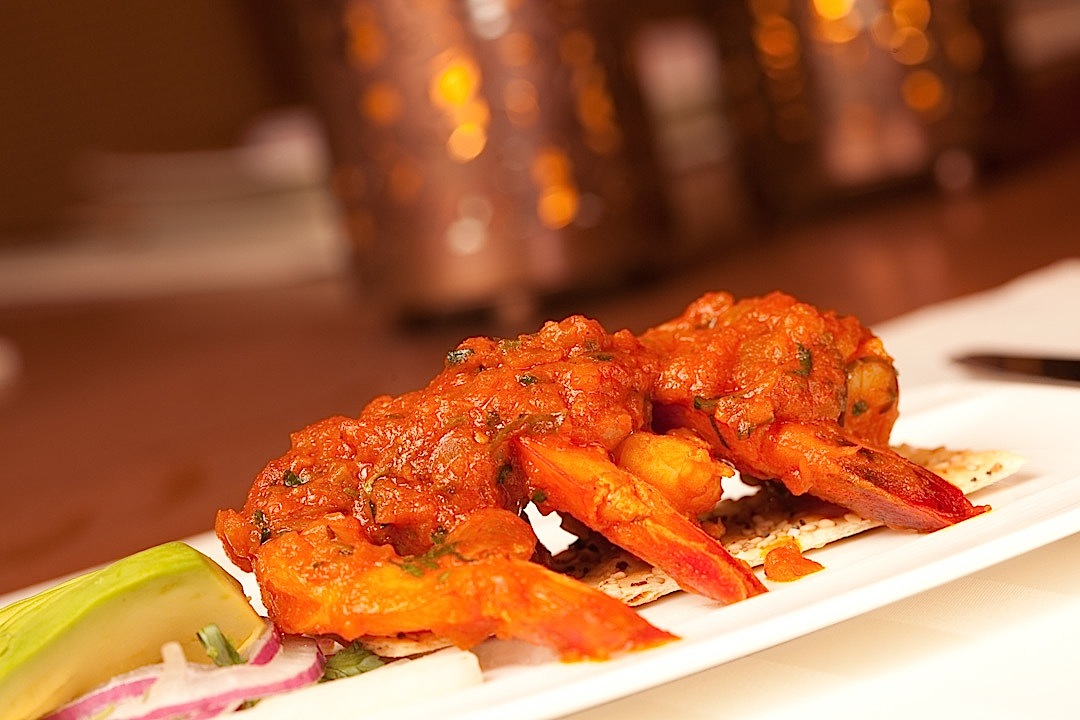 appetizers at $20 is a very good way to begin.
appetizers at $20 is a very good way to begin.Putting lobster in the fierce heat of a tandoori is tricky business, but Zunoon does it impeccably (below), keeping the shellfish juicy and the cumin, cayenne, lemon, fennel glaze distinct yl flavorful. There is also Dover sole with a sweet-sour veloute and cherry tomatoes that might be found on a good nouvelle cuisine menu in France, while duck with tellicherry peppercorns, garlic,m curry leaves and tamarind is more strictly Indian. The lamb chops are cooked in the tandoor too, with yogurt, white pepper green cardamon and fresh ginger, though I would like a bit ,ore searing on them. There is also lamb
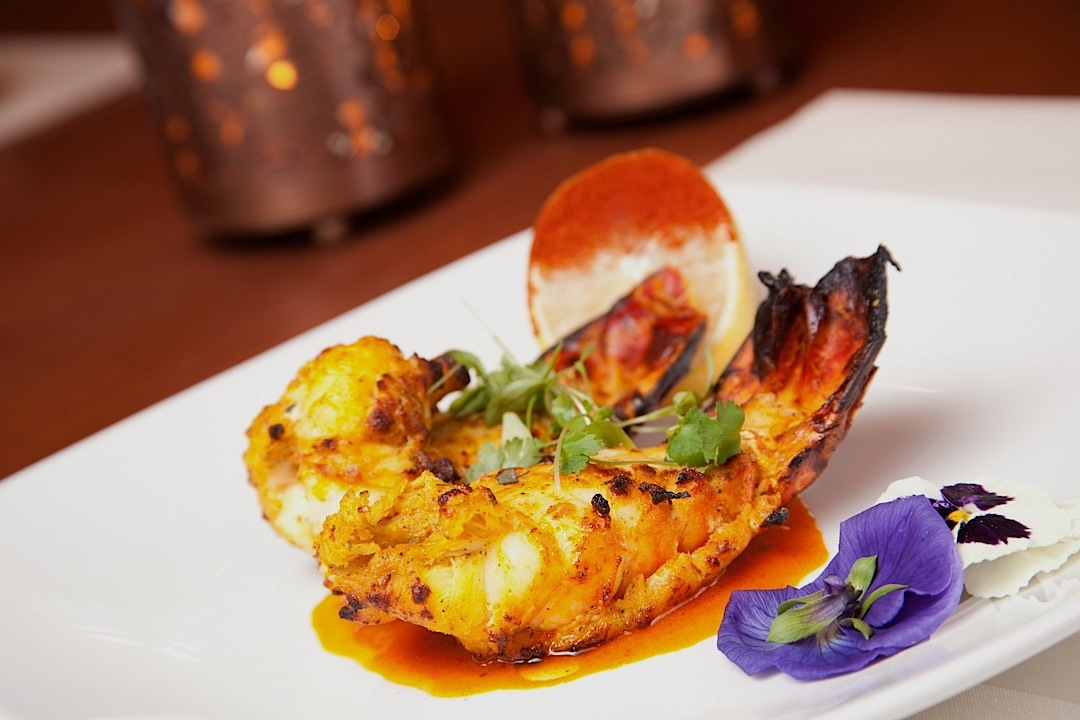 shoulder with papaya juice and garam masala, and juicy
venison tikka with coriander,
mint, nutmeg and mango powder.
shoulder with papaya juice and garam masala, and juicy
venison tikka with coriander,
mint, nutmeg and mango powder.One could easily order vegetarian here and be happy with dishes like paneer with cashews and cream; Yukon gold potatoes with sundried lentil dumpling and Kashmir chilies, and vegetables cooked in buttermilk with asafedita and mustard.
All the usual, irresistible Indian breads are prepared here, though oddly, a basket came to the table less than piping hot one evening. The specialty here is naan with prune and walnut paneer, onion, and garlic. There is also a five grain roti.
Pastry Chef Angie Lee goes well beyond the three cliches of Indian sweets--kulfi, kheer, and ras malai--with delicacies like a passion fruit bombe with katafi nest, coriander-infused basil seeds, and date pudding with caramel and orange-buttermilk ice cream, cranberry reduction and streusel.
If Indian cuisine is going to break through into the firmament now occupied by French, Italian, and American restaurants in NYC, Junoon will be in the vanguard.
Junoon is open nightly for dinner. Appetizers run $10-$15, main courses $16-$36. A "Five Elements" dinner of five courses is $65.

MAN ABOUT TOWN
by
Christopher Mariani
Savor Dallas 2011
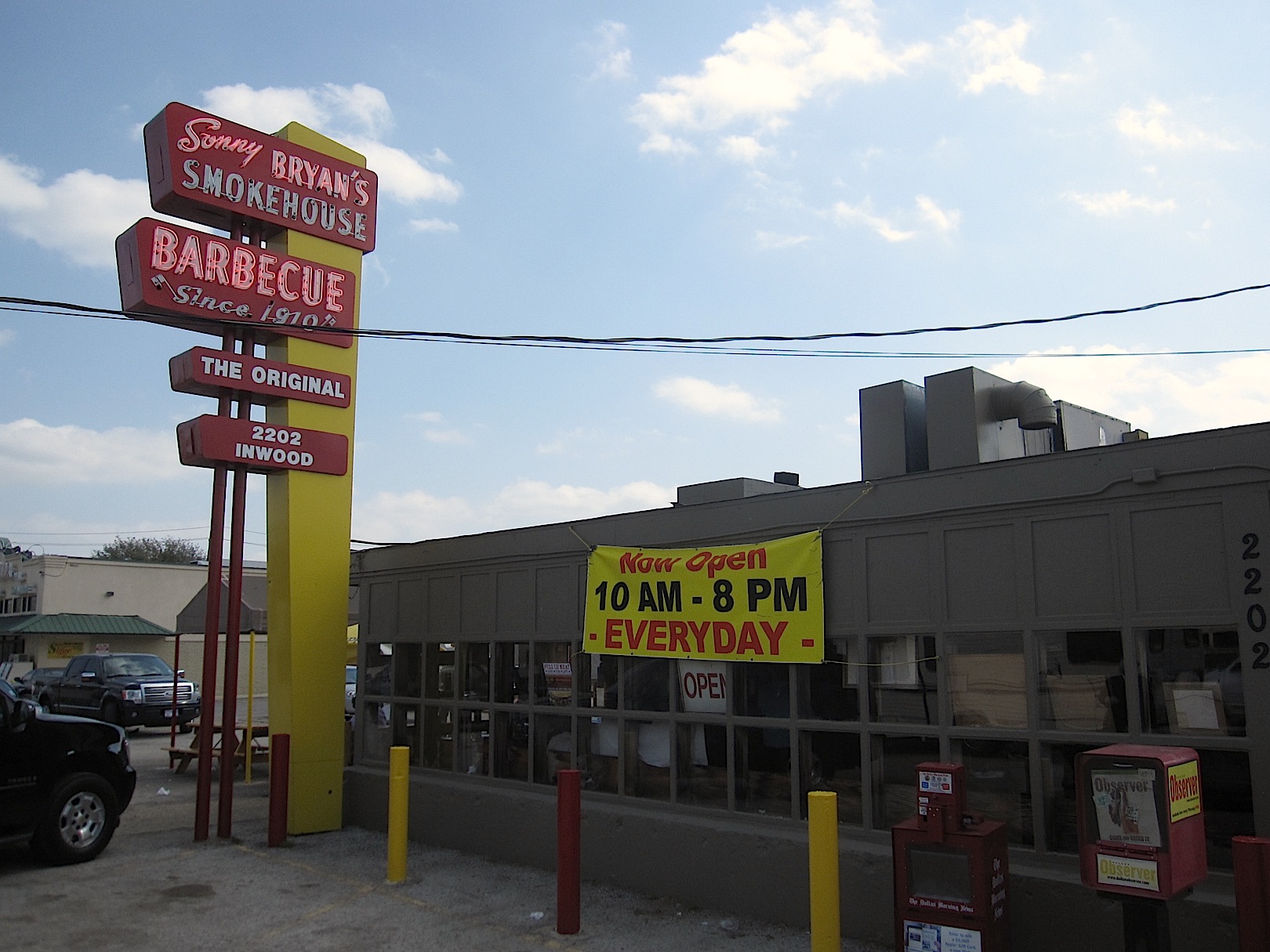 Just
recently, after an early a.m. flight into
Dallas, I exited DFW Airport, jumped in my good friend John Tiller's
silver Cadillac SUV
and drove east on I-635 towards the city. With the windows down and my
sunglasses on, I
asked, “Hey, John, you hungry?” He replied, “Sure am. How 'bout some
'que?” With a
big smile I said, “Sonny Bryan's it is.”
Just
recently, after an early a.m. flight into
Dallas, I exited DFW Airport, jumped in my good friend John Tiller's
silver Cadillac SUV
and drove east on I-635 towards the city. With the windows down and my
sunglasses on, I
asked, “Hey, John, you hungry?” He replied, “Sure am. How 'bout some
'que?” With a
big smile I said, “Sonny Bryan's it is.”
There is only one Sonny
Bryan's that any respectable
barbeque lover should eat at, and that’s the original on Inwood Road
(opened in
1958). Sad to say, but the other namesake replicas are merely poor
imitations. The original Sonny 's is not
glamorous by any means, it is actually quite dreary and run down, but
the barbeque
is some of the best in all of Texas. John and I walked in and without
hesitation placed our order for a plate of smoky ribs, a juicy pulled
pork
sandwich dripping with a sweet and tangy sauce, French fries, cole
slaw, crispy
onion rings and two cold Lone Star longnecks. You give your initials to
the girl behind the counter, then you wait, hungry as hell,
inhaling the smoky fumes. Once our initials were yelled out, we grabbed
our
grub and headed outside to eat at one of the few wooden picnic tables
underneath the hot sun. The alternative is to sit in a cramped inside
room in children's school chairs with arms. After filling up with
another round of beers we dropped off our empty
food trays and headed for the Mansion on Turtle Creek, without doubt Dallas’ premier
hotel. Upon walking into the lobby I was immediately approached
with a smile and asked, “Mr. Mariani, pleasure to see you again, how
was your
flight?” There is a level of hospitality and elegance that is difficult
to find
anywhere else, even in some of America’s finest
hotels. 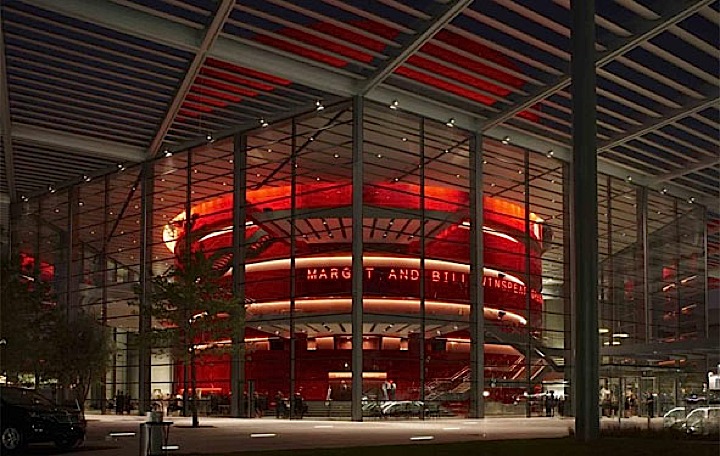
My
visit
to
Dallas
was
twofold.
First,
to
check
out
the
city’s annual Savor
Dallas weekend, filled
with over 600 different wine and spirit producers, along with the food
of 60
local chefs. Second, to dine around at some of the new restaurant
openings in
the city. The Savor Dallas events began on Friday afternoon as hordes
of wine
and food lovers filled the city’s grand Art District. Well-dressed
guests
walked in and out of the Margot and
Bill Winspear Opera House (right),
the
outdoor
Nasher Sculpture Center
and the Dallas Museum of Art
with glasses of wine in
hand. Within each building stations
were set up for sampling wine and food while  one
could
easily
drift
off
and
stroll
the
district
and
view
much of the beautiful artwork. The sky was
clear and the sun in abundance, a close-to-perfect day a for such a
wonderfully
charming event. Some of the notable wineries in attendance were sunny
California’s Sonoma-Cutrer Wines and Concannan Vineyards, along with
one of
Australia’s finest, Penfolds.
one
could
easily
drift
off
and
stroll
the
district
and
view
much of the beautiful artwork. The sky was
clear and the sun in abundance, a close-to-perfect day a for such a
wonderfully
charming event. Some of the notable wineries in attendance were sunny
California’s Sonoma-Cutrer Wines and Concannan Vineyards, along with
one of
Australia’s finest, Penfolds.
The following day,
wine seminars were held throughout the afternoon leading up to the
Reserve
Tasting, which notably included Beaulieu Vineyards’ Georges De Latour
Private
Reserve Cabernet Sauvignon, Rutherford, 2007 and Hall’s “Kathryn Hall”
Cabernet
Sauvignon, Napa Valley, 2007. Following the Reserve Tasting was an
International
Grand Tasting held within the Sheraton Hotel’s massive ballroom where
over 3,500
guests were present. The gala event was full of energy as visitors
walked from
table to table tasting different wines while also eating specialty
dishes
prepared by some of Dallas’ best chefs, including Stephen Pyles of
Stephen Pyles and Samar, Bruno
Davaillon, from The Mansion on Turtle Creek, and Dunia Borga,
from
La Duni. The event went late into the night as party-goers
began to sway and set off to after parties throughout the city.
The
weekend was lovely, very Texan in its spirit and hospitality, and
offered wine and food enthusiasts and chance to educate
themselves while simply having a splendid time and
possibly
eating and drinking a bit too much.
I will be reporting on the restaurants I dined at in Dallas in a future issue.
To contact Christopher Mariani send an email to christopher@johnmariani.com
A
decade ago I would
never have written a sentence like, “On a recent trip to Israel I was
very
enthusiastic to order Israeli wines with my meals.” For despite the
biblical
claim (Psalms 104:15) that
wine was a gift of God “to gladden the heart of man,”
two millennial went by before truly good wine came out of Israel.
Indeed, when
the 4th edition of The Sotheby’s Wine Encyclopedia
appeared in 2005,
Israeli wines received only one skimpy paragraph.
One of my favorite stories in rte New Testament is
in John, Chapter two, the Marriage Feast at Cana (right), when Mary asks her son
Jesus to help out when the host has run out of wine. Christ at
first demurs, then touches his fingers to an urn of water and
changes into wine. The wondrous thing about the story is
that the wine
steward goes to his master and says, "Every
man
at
the
beginning
doth
set
forth
good
wine;
and
when
men
have
well
drunk,
then that which is worse: but thou hast kept the good wine
until now." Christ as connoisseur.
But there I was this past September
dining on “Jacob & Esau’s biblical red lentil stew” and a wild
mallow herb
called hubeiza “eaten during
the ’48 siege on Jerusalem” as part of the
kosher
menu for “King David’s Feast” at one of Jerusalem’s finest restaurant,
At Eucalyptus (see story above on
Israel) I was happily drinking a
delicious 2009 merlot from the Samson
Hills made by the Efrat Winery, which started making wines in a
Jerusalem
alleyway back in 1870, now a leading wine company making more than 100
wines
and grape juices.
A day later
at the very modern
non-kosher restaurant Segev, located in Tel Aviv’s business district, I
feasted on grilled duck breast
with
sunflower seeds and ground sesame, and fresh shrimp cooked in butter
and green
garlic, along with a wonderful bottle of Yarden 2007 Katzrin Chardonnay
that I’d
swear was right out of Napa Valley; it’s actually from the volcanic
soil of the
Golan Heights.
Viticulture
has a rocky history in
Israel: in 636 A.D. the Muslims conquered Jerusalem and ripped out the
vineyards, restored by the Crusaders in the 12th
century. During the
Diaspora the vineyards were abandoned, but upon the Jews’ return to the
Holy
Land in the 19th century,
Baron Edmond de Rothschild of France
replanted vineyards with European varietals and founded Carmel Winery.
Ever
since, Jewish vintners have continued to make wine, both kosher and
non-kosher. Today Israel has more
than 120 wineries producing cabernet sauvignon, merlot, sauvignon
blanc,
semillon, grenache and other varietals.
Overwhelmingly,
Israeli
wines
are
made
by
cooperatives,
with
50
percent
made
by
Carmel;
the
other
big
players are
Barkan Wine Cellars and Golan Heights Winery. The U.S. is the biggest
export
market.
Kosher
wines must meet stringent
requirements, e.g., vines
must be at least four years old; vineyards
within
biblical lands must be left fallow every seven years; only vines may be
planted
in vineyard land; and the grapes, after arrival at the winery, may only
be
handled by certified “Sabbath-observant Jews”; non-Jews may not even
handle
bottled kosher wines unless they’ve been flash pasteurized (a process
called yayin
mevushal).
Few
kosher
wines,
however,
taste
anything
like
the
cloyingly
sweet
Manischewitz
that
some
American
Jews
still
serve on
holidays. The wines I tasted in Israel and many more for the purposes
of this
report were all clean, well-made, and dry; many can compete with the
better
wines now coming out of Lebanon, Eastern Europe, Spain and Portugal.
In my
tastings back home I
concentrated on red wines, which seemed to offer more distinctive
varietal
character. Some of the cabernet
sauvignons had an assembly line style about them, with no suggestion of
terroir
beyond being heavy and dense. I preferred the regular cab made by Recanati 2009
($16), in Upper Galilee, to their intensely inky Special Reserve 2006
($45).
The former was an excellent young cab, with a high 14.5 percent alcohol
but
none of the burn of similar California examples.
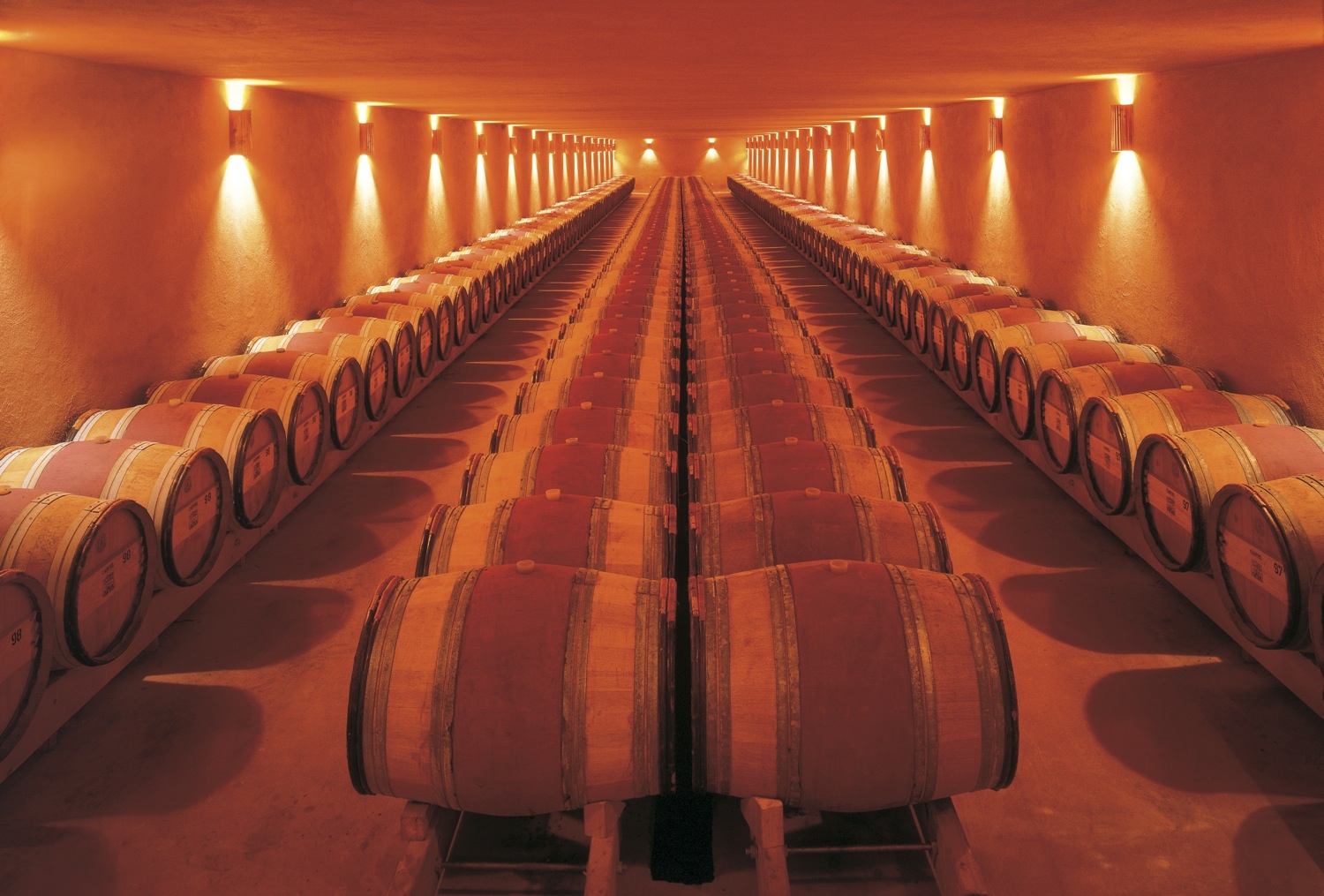 I did enjoy the 2007 Reserve from Bazelet HaGolan ($40),
unfiltered and aged for 20 months, which seemed to
ameliorate its high 14.9 percent alcohol level, making this a creamy
cab. The
more modest 13.8 percent of a 2007 Barkan
Altitude
Series
“+720” ($33) brought
out its lush fruit, and its medium body goes very well with lamb chops.
A very
pricey 2006 cab and petit verdot blend by Yatir ($56), a highly
regarded
vintner in the Judaen Hills, had a peppery component that would enhance
Middle
Eastern-style mezes. The
surprisingly named Domaine de Castel
Grand Vin 2007
Haute Judee ($76) was a Bordeaux-style blend I found had a
rubbery nose and
little pleasure about it. (Its cellars are shown at left.)
I did enjoy the 2007 Reserve from Bazelet HaGolan ($40),
unfiltered and aged for 20 months, which seemed to
ameliorate its high 14.9 percent alcohol level, making this a creamy
cab. The
more modest 13.8 percent of a 2007 Barkan
Altitude
Series
“+720” ($33) brought
out its lush fruit, and its medium body goes very well with lamb chops.
A very
pricey 2006 cab and petit verdot blend by Yatir ($56), a highly
regarded
vintner in the Judaen Hills, had a peppery component that would enhance
Middle
Eastern-style mezes. The
surprisingly named Domaine de Castel
Grand Vin 2007
Haute Judee ($76) was a Bordeaux-style blend I found had a
rubbery nose and
little pleasure about it. (Its cellars are shown at left.)
Tishibi is also among Israel’s star
boutique wineries, dating back to 1882, run since 1984 by Jonathan
Tishibi.
Their wines show careful attention to terroir, blending and aging, and
I was
impressed by their 2006 Estate Merlot, with 5 percent cabernet franc
($17). I
would hardly identify Tishibi’s 2006
Estate Pinot Noir ($20) as a pinot noir in
a blind tasting, for that fickle grape has many expressions. Theirs is
pleasant, well-fruited example, easy enough to drink with any kind of
meat.
Of all the
varietals I tasted, I
think syrah/shiraz has the brightest future in Israel, especially a 2009
Domaine Netofa ($21) from Lower Galilee, a well-wrought
Rhone-style red with
some mourvedre in it. And if you like your wines plummy, the 2005 Yarden Syrah ($25)
with 14.5 percent alcohol is a dead ringer for some of the bolder
Australian
Shirazes.
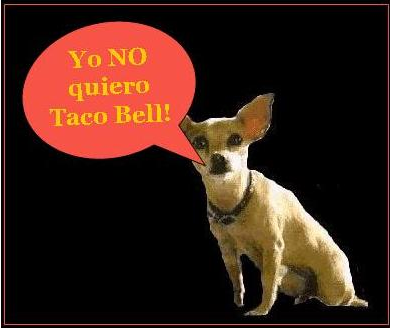 WHY
DON'T THESE THINGS EVER HAPPEN
WHY
DON'T THESE THINGS EVER HAPPEN AT THE FRENCH LAUNDRY?
After
becoming
enraged
that
the seven
burritos he ordered had gone up in price--the Beefy
Crunch Burrito had gone from 99 cents to $1.49 each--a San Antonio
Taco Bell fired
an air gun at an employee and later fired an assault rifle at officers
after barricading himself into a hotel room, where he was forced out by
tear gas after a three-hour stand-off. . . . 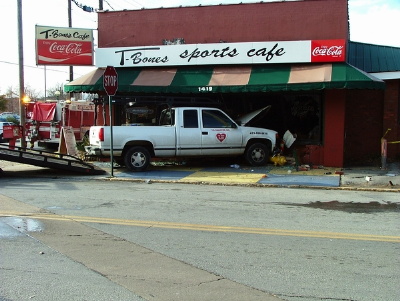 MEANWHILE IN MONTREAL: A man
deliberately
drove his car through the front window of a Montreal cafe in order to
injure
three people with whom he had an argument he had argued with earlier.
He also threatened them with a knife. The
three men were not injured. Police say the cafe has been raided several
times by police for
drugs.
MEANWHILE IN MONTREAL: A man
deliberately
drove his car through the front window of a Montreal cafe in order to
injure
three people with whom he had an argument he had argued with earlier.
He also threatened them with a knife. The
three men were not injured. Police say the cafe has been raided several
times by police for
drugs.
OFF WITH THEIR HEADS!

A Reuters story entitled, "If you've ever wanted to eat
sweets disgorged from the chests of royalty, your time has come,"
reports that PEZ candy dispensers has created a
special pair in the likeness of Britain's
Prince William and his fiancee Kate Middleton ain time for their royal
wedding. Fans can
submit offers on the eBay for Charity auction platform from April 7 to
17, with proceeds going to charity supported by the couple.
Kate wears blue while
William dresses in black with a red tie, and spokeswoman for PEZ
said, "The figure
of Prince William has a lot
more hair than in real life," the spokeswoman said.
|
Eleven
at
the
Loews
Hotel
On April 12, Eleven at the
Loews Hotel in Atlanta, GA
will host a
"Corks of Burgundy" wine dinner with a focus on the wines from the
house of Louis Latour. Guests will enjoy a five-course tasting menu
paired with two burgundy wines for each course. The five-course dinner
is $95 per person exclusive of tax and gratuity. Call
404-745-5745 or visit www.loewshotels.com |
|
Chens
Chinese
and
Sushi
On April 12, Chens Chinese and
Sushi in Chicago, IL, will
celebrate its 17th anniversary with a benefit for Japan. Guests will
enjoy an assortment of Chinese and sushi dishes and be entered into a
raffle for prizes like gift certificates, hotel stays and theater
tickets. All proceeds will benefit disaster relief in Japan. $50pp.
Call 773-549-9100 or visit http://koi-chens.ticketleap.com/chens-japan-benefit/ |
|
ELWAY'S
Downtown
On April 13 in Denver, CO The Ritz-Carlton's
signature restaurant, ELWAY'S Downtown will host a Johnnie Walker
five-course pairing dinner featuring a seasonal menu by ELWAY'S Chef
Robert Bogart. Attendees will get to meet the House of Walker's Whiskey
Master, Robert Sickler. Selected Scotch blends include Johnnie Walker
Red Label, Green Label, Blue Label, Black Label and Gold Label. $75 pp
plus tax and gratuity. Call 303-312-3107 or visit www.elways.com |
|
1300
Fillmore
On April 13 Rare opportunity
to be a part of a collaboration dinner
involving one of the wine world’s most renowned master sommeliers and
the chef leading the soulful American cuisine movement. Sample Emmanuel
Kemiji’s public and private wine library collections featuring Miura
and Tejada Vineyards – featuring wines that have been out of
circulation for over 10 years or never seen anywhere else - paired with
Chef David Lawrence’s creative influence with the soul of southern
cuisine. Wednesday, April 13, 6:00 pm reception, 7:00 pm dinner. $95
plus tax and gratuity for the reception and five-course wine pairing
dinner. For reservations call (415) 771-7100 or visit www.1300Fillmore.com |
|
Grotto
Italian
Steakhouse
On April 13, Grotto Italian
Steakhouse in Oak Brook, IL,
will
host
a
Wine
and
Cheese
Tasting
featuring
Estancia
Pinot Noir and Kim Crawford
Sauvignon Blanc. The wines will be paired with an array of hand cut
cheeses selected by Executive Chef Abraham Aguirre. Complimentary. Call
630-571-5700 or visit www.grottooakbrook.com.
|
|
Terzo
Piano
On April 14, Chef Tony
Mantuano will host Chef Jonathan Waxman for a
seated dinner at Terzo Piano in Chicago
in honor of Waxman's new
cookbook, "Italian, My Way." Antipasti and cocktails followed by a
family-style dinner with wine. Books will be available for purchase and
signing with proceeds from all sales benefiting The Leukemia and
Lymphoma Society of Illinois. $75 pp plus tax and gratuity. Call
312-443-8650 for reservations or visit www.terzopianochicago.com.
|
|
Ozumo
On April 14 in Oakland, CA, Ozumo will host a
Cherry Blossom Festival celebration with food and drink specials, live
taiko drummers and a singer. No music cover charge, no reservations are
required. Call 510-286-9866 or visit www.Ozumo.com
|
|
Southern
Food
and
Beverage
Museum
On April 15 the Southern Food
and Beverage Museum will hold a party to celebrate the opening of
Barbecue Nation, an exhibit that explores the roots and variations of
barbecue in the American South. On April
16 the museum will host Troy Gilbert as he signs his newest
venture, the Cafe Degas Cookbook. Both events are free and open to the
public. For more information contact info@southernfood.org or
504-569-0405. |
|
Alexander's
Steakhouse
On April 18 in San Francisco, CA, Alexander’s
Steakhouse hosts a
Premium Champagne Paired Dinner beginning at 6:00 PM. The 8-course meal
with pairings is $750 per person. Call 415-495-1111 or visit www.alexanderssteakhouse.com
|
|
Americano
Restaurant
On April 17 in San Francisco, CA, Chef Kory
Stewart of Americano
Restaurant will host a “Wild Foods” dinner with guest Chef Michael
Tuohy of Grange Restaurant (Sacramento, CA). The two Joie de
Vivre
chefs will collaborate to create a five-course supper with dishes
featuring wild ingredients such as nasturtium, wild mustard, spruce tip
oil, and morel mushrooms. The evening includes a special book
signing
by Connie Green, author of The Wild Table. $65pp or $90pp with paired
wines. Reservations required. Call 415-278-3777 or
visit www.americanorestaurant.com.
|
|
Chicago
q
On April 18, Chicago q in Chicago will offer a tax day
special featuring a decadent three-course prix-fixe menu for lunch
($15) and dinner ($18) including House Bacon Cheddar Hush Puppies,
Smoked Dry-Rubbed Wings, Pulled Pork or Kobe Brisket Sandwiches for
lunch, and Half Slab Baby Back or St. Louis Ribs for dinner. Call
312-642-1160 or visit www.chicagoqrestaurant.com |
|
Real
Urban
Barbeque
On April 18, Real Urban
Barbecue in Highland Park, ILL,
will
celebrate
Passover
by
offering
Seder
dinners
for
12
guests. Available for
carryout, these meals will include your choice of 1 appetizer, 1 meat,
and 2 sides from Chef/Owner Jeff Shapiro’s arsenal of smoked meats,
including his famous beef brisket, and traditional Jewish
delicacies.
$165/package. Call 244-770-4227 or visit www.realurbanbbq.com |
|
Capsouto Freres
On April 18 and 19 in NYC, Capsouto Freres will host
special Sephardic
(non-Kosher) Seders for Passover. A Cantor will conduct the
Seders,
and the dinner is a benefit for The American Jewish Joint Distribution
Committee. 100% of the proceeds will go to charity. $150 pp donation.
To reserve call 212-966-4900 or visit www.capsoutofreres.com. |
|
HENRY's
On April 19 in NYC, Chef Mark Barrett will
prepare a Seder Plate and a
Three Course Traditional Passover Dinner at HENRY’s on the Upper West
Side on the second night of Passover. Call 212-866-0600 for
reservations or visit www.henrysnyc.com. |
|
Brookline
Booksmith
On April 19 at Brookline
Booksmith in Boston,
Melissa Coleman will read
from This Life Is in Your Hands: One Dream, Sixty Acres, and a Family
Undone, a memoir that takes place during the early days of the natural
living and organic food movements. Brookline Booksmith 617-566-6660, or
visit www.melissacoleman.com |
|
Spenger's Fresh
Fish Grotto
On April 21 in Berkeley, CA, Spenger's Fresh
Fish Grotto hosts a wine-paired dinner with a five-course prix fixe
menu prepared by Chef Patrick Kehler. $50 pp. Call 510-845-7771 or
visit www.spengers.com. |
|
Corner
Bookstore
On April 21 at Corner
Bookstore in New York, NY,
Melissa Coleman will
read from This Life Is in Your Hands: One Dream, Sixty Acres, and a
Family Undone, a memoir that takes place during the early days of the
natural living and organic food movements. Corner Bookstore
212-831-3554, or visit www.melissacoleman.com. |
|
San
Gabriel
Mexican
Cafe
On April 21, join San Gabriel
Mexican Cafe in Bannockburn, IL,
as
they
launch
a
new
monthly
cooking
series.
Executive
Chef Dudley Nieto will
teach guests how to prepare a Cinco de Mayo feast at home! Guests will
sip on complimentary margaritas, chips and salsa as they watch Chef
Nieto prepare five holiday specialties. Samples of the dishes will be
provided along with the recipes. Priced at $25pp. Class begins at 6
p.m. and reservations are required. Call 847-940-0200 or visit www.sangabcafe.com. |
|
Grotto
Italian
Steakhouse
On April 21, Grotto Italian
Steakhouse in Oak Brook, IL,
will
offer
a
special
Deal
of
the
Day.
Guests
will enjoy a complete meal for $14
featuring an 8 oz. Filet Mignon accompanied by a House Salad, available
at both lunch and dinner. $14pp. Call 630-571-5700 or visit www.grottooakbrook.com.
|
|
Cityscape
Bar
On April 21, Cityscape Bar in Chicago, IL, will host a Vino
with a View
sampling. Led by a representative of Tenzing Wine and Spirits, guests
will enjoy varietals like 2007 Naia Naiades and 2008 Clos de Los Siete.
Complimentary. Call 312-836-5000 or visit www.cityscapebar.com. |
❖❖❖
Any of John Mariani's books below
may be ordered from amazon.com.
" A fact-filled,
entertaining history [that] substantiates its title with hundreds of
facts in this meaty history of the rise of Italian food culture around
the
globe. From Charles Dickens's journey through Italy in 1844 to
20th-century
immigrants to America selling ice cream on the streets of New Orleans,
Mariani
constantly surprises the reader with little-known culinary anecdotes
about
Italy and its people, who have made pasta and pizza household dishes in
the
U.S. and beyond."--Publishers Weekly "Equal
parts
history,
sociology,
gastornomy,
and
just
plain
fun,
How
Italian
Food
Conquered
the
World
tells
the
captivating
and
delicious story of
the (let's face it) everybody's favorite cuisine with clarity, verve
and more than one surprise."--Colman Andrews, editorial director of The Daily Meal.com. "A
fantastic and fascinating read, covering everything from the influence
of Venice's spice trade to the imnpact of Italian immigrants in
America and the evolution of alta cucina. This book will serve as a
terrific resource to anyone iunterested in the real story of Italian
food."--Mary Ann Espositio, hosty of PBS-TV's Ciao Italia. "John
Mariani
has
written
the
definitive
history
of
how
Italians
won
their
way
into
our
hearts,
min
ds,
and
stomachs. It's a story of
pleasure over pomp and taste over technique."--Danny Meyer, owner of
NYC restaurants Union Square Cafe, Gotham Bar & Grill, The Modern,
and Maialino.
|
 |
 |
 |
 |
 |
 |
 |
 |
 Everett
Potter's
Travel
Report:
Everett
Potter's
Travel
Report: 
 Eating
Las
Vegas is the new on-line site for Virtual Gourmet
contributor John
A. Curtas., who since 1995 has been commenting on the Las Vegas food
scene and reviewing restaurants for Nevada Public Radio. He is
also
the restaurant critic for KLAS TV, Channel 8 in Las Vegas, and his past
reviews can be accessed at KNPR.org.
Click
on
the
logo
below
to
go
directly
to
his
site.
Eating
Las
Vegas is the new on-line site for Virtual Gourmet
contributor John
A. Curtas., who since 1995 has been commenting on the Las Vegas food
scene and reviewing restaurants for Nevada Public Radio. He is
also
the restaurant critic for KLAS TV, Channel 8 in Las Vegas, and his past
reviews can be accessed at KNPR.org.
Click
on
the
logo
below
to
go
directly
to
his
site.

Tennis Resorts Online: A Critical Guide to the World's Best Tennis Resorts and Tennis Camps, published by ROGER COX, who has spent more than two decades writing about tennis travel, including a 17-year stretch for Tennis magazine. He has also written for Arthur Frommer's Budget Travel, New York Magazine, Travel & Leisure, Esquire, Money, USTA Magazine, Men's Journal, and The Robb Report. He has authored two books-The World's Best Tennis Vacations (Stephen Greene Press/Viking Penguin, 1990) and The Best Places to Stay in the Rockies (Houghton Mifflin, 1992 & 1994), and the Melbourne (Australia) chapter to the Wall Street Journal Business Guide to Cities of the Pacific Rim (Fodor's Travel Guides, 1991).

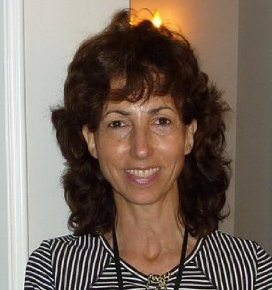
The Family Travel Forum
- A community for those who
"Have Kids, Still Travel" and want to make family vacations more fun,
less work and better value. FTF's travel and parenting features,
including
reviews of tropical and ski resorts, reunion destinations, attractions,
holiday
weekends, family festivals, cruises, and all kinds of vacation ideas
should be
the first port of call for family vacation planners. http://www.familytravelforum.com/index.html
ALL YOU NEED BEFORE YOU GO


MARIANI'S VIRTUAL GOURMET NEWSLETTER is published weekly. Editor/Publisher: John Mariani.
Contributing Writers: Christopher
Mariani, Robert Mariani,
John A. Curtas, Edward Brivio, Mort
Hochstein, Suzanne Wright, and
Brian Freedman. Contributing
Photographers: Galina Stepanoff-Dargery, Bobby Pirillo. Technical
Advisor:
Gerry McLoughlin.
Click
Here
to
return
to
John
Mariani's Homepage
© copyright John Mariani 2011

